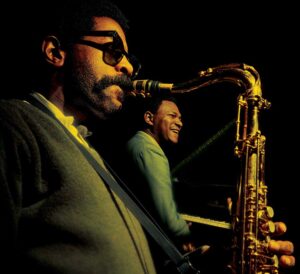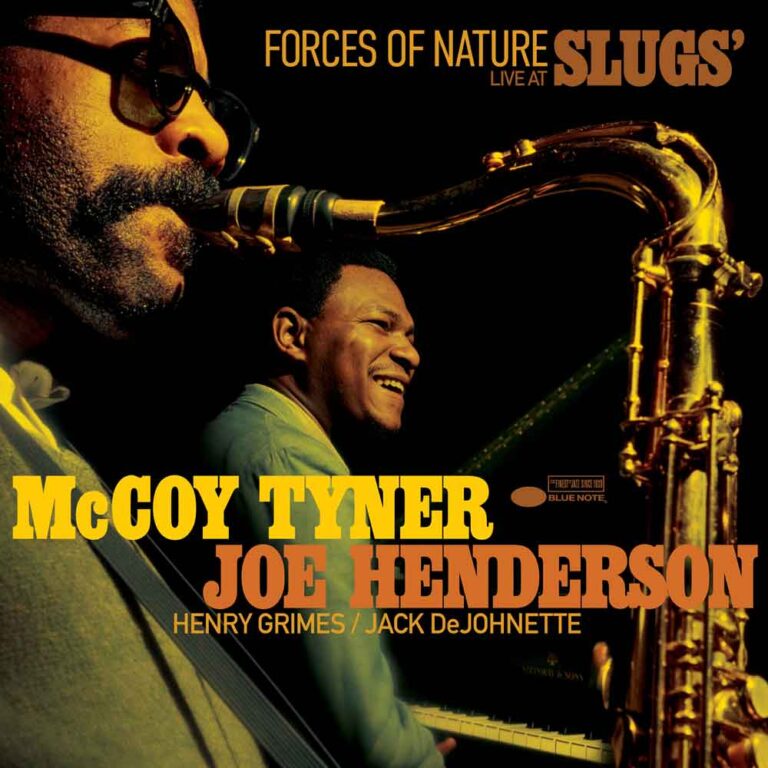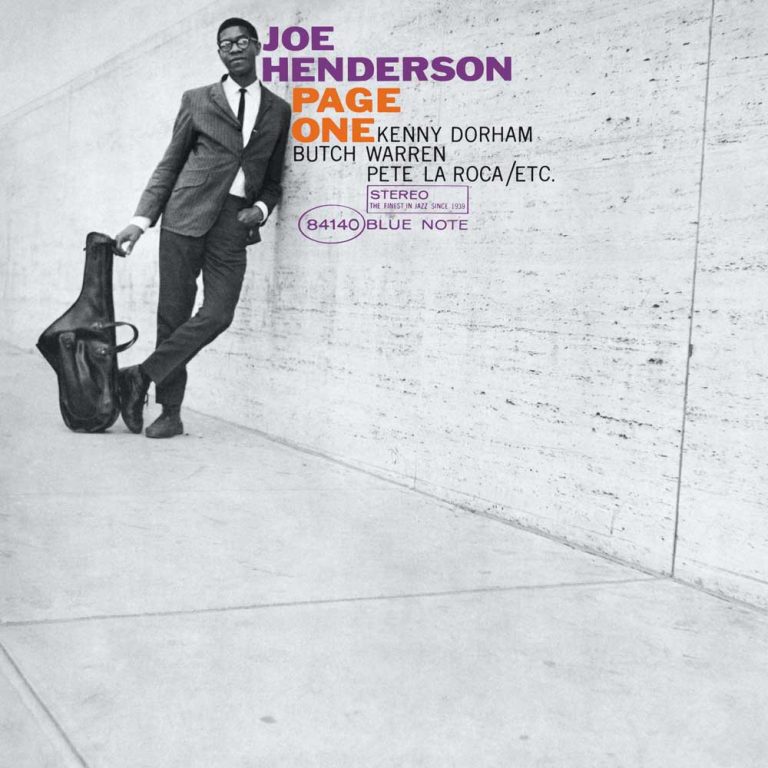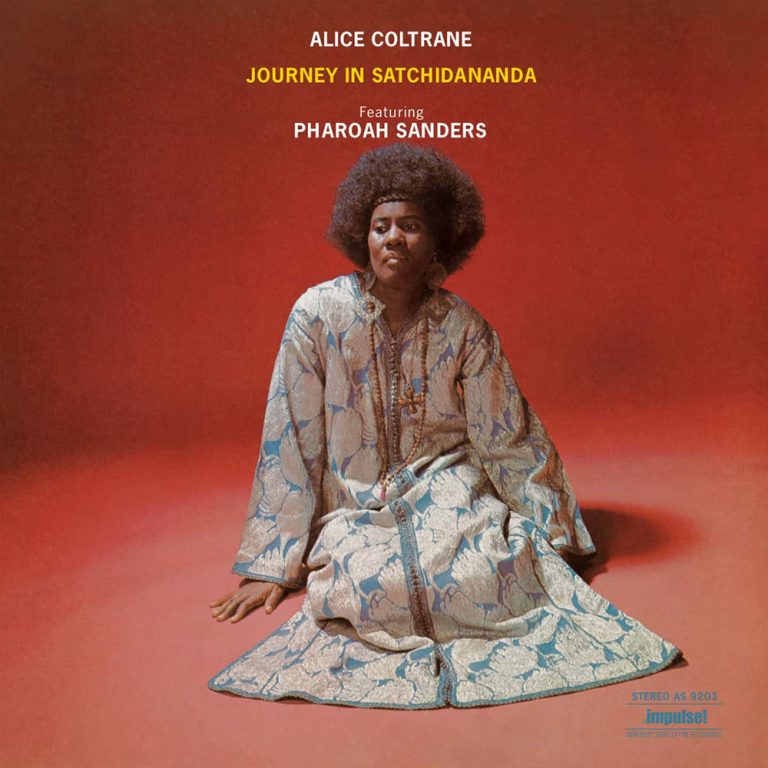Every now and then, an unexpected archival release comes along that sends shockwaves through the jazz world. That’s the case with “Forces of Nature: Live at Slugs’”, a previously unheard live recording from 1966, which captures a heavyweight quartet co-led by jazz giants, pianist McCoy Tyner and tenor saxophonist Joe Henderson, with Henry Grimes on bass and Jack DeJohnette on drums. It’s a blistering document of four greats at the very top of their game, burning through five incredible performances including a high-octane, nearly 27-minute version of Henderson’s “In ‘N’ Out” and a hurtling 28-minute group composition entitled “Taking Off.”
For over half a century, the recording languished in DeJohnette’s personal archives, until it came to the attention of renowned producer Zev Feldman. Known as the Jazz Detective, Feldman has been a driving force behind a slew of vital archival releases such as the 2021 posthumous addition to John Coltrane’s catalogue, “A Love Supreme: Live in Seattle.”
“This has got to be one of the most exciting projects that I’ve ever been involved with,” he says. “From the first time I heard these recordings, I knew that there was something so extraordinary about them. My jaw was on the floor. When you talk about McCoy Tyner and Joe Henderson, it seems like we just oftentimes reach for the same records by them over and over. This release is like unearthing a whole new chapter. These musicians are playing at such a high level of intensity and the energy is off the charts. I think it’s probably one of the most incredible live jazz documents that we’ve ever heard.”
This is one of the greatest discoveries of the last 30 or 40 years
Zev Feldman
Certainly, the album catches all four musicians at a fascinating moment in their careers. By 1966, Tyner and Henderson had already forged a strong bond, with Tyner playing on the saxophonist’s 1963 debut album “Page One,” and on 1964’s “In ‘N’ Out” and “Inner Urge.”
Just the year before, Tyner had ended his five-year tenure with John Coltrane’s world-shaking Classic Quartet, after pushing further and further toward the avant-garde. 1966 was also the year DeJohnette moved to New York and joined the progressive yet popular Charles Lloyd Quartet. Meanwhile, Grimes – who had cut his teeth playing straight-ahead jazz with the likes of Sonny Rollins – had, by the mid-60s, become a leading figure in New York’s free-jazz scene, recording with leading practitioners of the New Thing including Albert Ayler and Don Cherry. So, while the music on “Forces of Nature” swings supremely hard with a relentless forward momentum, it also feels like it’s straining hard to break free of all limitations.
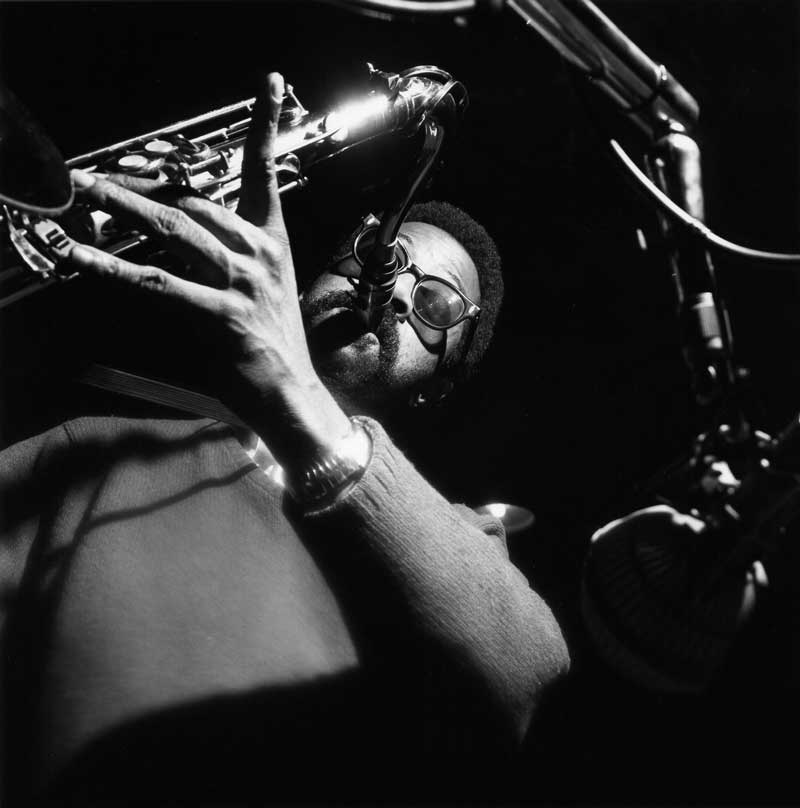
“This recording represents a time and period where musicians were really playing, intensely searching and experimenting with new things,” says DeJohnette. “It was a highly creative time then. Musicians were trying things and of course, there were venues like Slugs’ where people could actually play and develop their craft… At that time, things were shifting in music; shifting over to a more, shall we say, exploratory music. And so that environment encouraged those explorations.” Situated in New York’s East Village, Slugs’ was a vibrant jazz club with a risk-taking reputation, which operated from the mid-60s through to its demise in 1972, following the murder of Lee Morgan on the premises.
Now regarded as a near-mythical lost shrine of jazz history, its ambience is brought to thrilling new life on these recordings. “There was so much incredible music that went down in that room,” says Feldman. “To have this document from there is a reminder of how there was something about that place that was really special. It represents what was happening there at that time.”
The pristine recordings heard on “Forces of Nature” were originally made by legendary engineer Orville O’Brien, one of the very few African American recording engineers working in jazz at the time, who recorded such classics as Freddie Hubbard’s “The Night of the Cookers,” Charles Tolliver’s “Music Inc.” and Alice Coltrane’s “Journey In Satchidananda.“
“He doesn’t get discussed enough,” says Feldman. “He’s another intriguing, mystery figure in all this too. So, on these recordings, you have all these different touchstones that come together.”
For Feldman, there’s no doubt that the discovery and release of these extraordinary recordings is a major milestone in the ever-unfolding story of jazz that he’s helping to tell. “It reminds us that, no matter how many decades removed we are later down the road, we’re still making these kinds of discoveries,” he enthuses. “We’re still finding things. And I hope that we will continue to do that because the work is really important. It’s musical archaeology. But it’s also about finding something that’s going to part your hair down the middle and make you excited. And this one really, truly does. This is one of the greatest discoveries of the last 30 or 40 years.”
Read on…Henry Grimes – Lunch with the Disappearing Jazz Legend
Daniel Spicer is a Brighton-based writer, broadcaster and poet with bylines in The Wire, Jazzwise, Songlines and The Quietus. He’s the author of a book on Turkish psychedelic music and an anthology of articles from the Jazzwise archives.
Header image Joe Henderson and McCoy Tyner. Photo: Francis Wolff / Blue Note Records.


